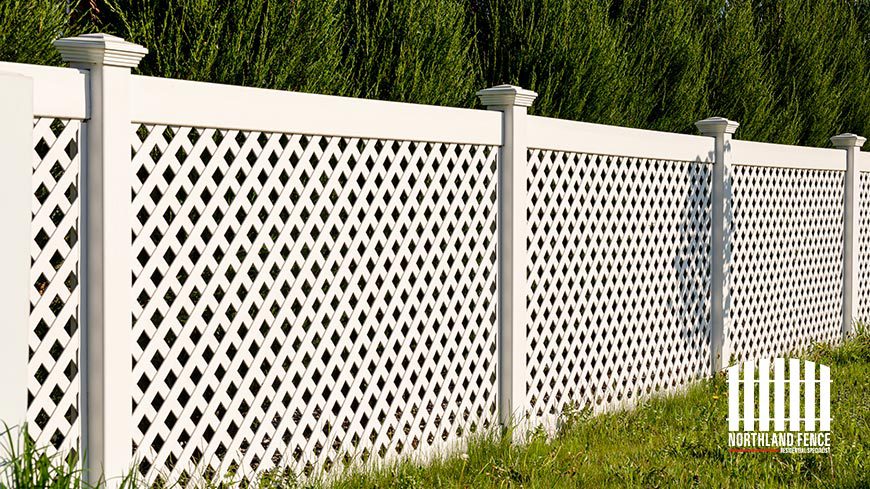Vinyl fencing is one of our most popular forms of fencing. This is in large part because it is highly durable, functional, affordable, and attractive. Vinyl fencing is also excellent for providing privacy. Vinyl fences do not rot or break down the way traditional wood fencing does and require very little maintenance.
There are many benefits of vinyl fencing, however, they do not go all the way to the ground. Because it is all one standard height, any uneven part of and/or slope in your yard will result in a gap between the ground and the bottom of the fence. There’s some gap even if your fence is built on flat ground.
There are several ways to deal with a gap underneath a vinyl fence.
Stepping
Stepping is one of the most common ways to put a vinyl fence in a sloping yard. This method simply means that instead of lining up the fence so that it is even at the top when you are installing the fence, you line it up so it is even with the ground as it goes along the slope.
If possible, it will look best if you lower the fence at the same rate with each panel. For example, if you drop one panel by three inches, drop the next panel by the same amount, and so on.
When using this method, there should still be a small gap between the ground and the bottom of the fence. However, it should stop the gap from getting larger as it goes down the slope.
The nicest thing about this technique is that it doesn’t require any additional materials, so there is no additional cost associated with the stepping method.
Dirt or Mound
The dirt or mound method is exactly what it sounds like. You simply fill the gap under the bottom of the fence with dirt. To do this effectively, the dirt will need to be packed tightly into the gap. This is a good method if you just want to get rid of the gap because of the way it looks. It is also very easy to move or change mounds of dirt if you ever need to move or take down your fence.
However, if you are trying to keep a pet, like a dog, within the yard, this method is unlikely to be effective. The same goes for any type of animal you are trying to keep out of your yard, like a mole or groundhog, because animals will just dig through the dirt.
Barrier
Another option is to install a barrier of some kind that you bolt to the bottom of the fence. To use this method, you typically align the vinyl fencing so that each piece is even at the top. Then you can bolt pieces of vinyl or other material to the bottom of the fence, closing any gap that appears there.
This method is cost-effective while also being good for keeping animals in — or out — of your yard. It can also be moved or adjusted along with your fence as your needs change.
Rock Filler
Using rocks or even small stones to fill the gap under your vinyl fence can be a good option.
You can lay down stone before you set the actual vinyl panels, or you can use it to fill gaps as they arise while you are installing the fence.
This is a good option because it adds a stable base to your fence while doing a good job of keeping animals on the proper side of the fence. This is cost-effective and easy to remove in case your needs change.
Curb or Solid Filler
A curb or solid filler is probably the most effective way to fill a gap at the bottom of your vinyl fence. It is often done using concrete, which provides a solid structural base for the fence. It is also impossible to dig through or move, which keeps pets, pests, children, and visitors of all kinds on the side of the fence they are supposed to be on.
Concrete starts as a liquid and is typically poured into the gap after the fence is completely put up. Concrete is a labor-intensive option, especially if you have never worked with the material before.
The curb is unlikely to need repairs as concrete hardens over time and will get more difficult, not easier, to breakthrough. However, if your needs change and you have to move or tear down your fence, it will be much more difficult to remove or adjust this filler than it would be if you used something like dirt, stones, or even a vinyl barrier.
What Is a Vinyl Fence Made of?
A vinyl fence is made out of polyvinyl chloride, better known as PVC. It is used to make many different products, including pipes, doors, windows, and other products that need to be highly durable. This material is great for Minnesota winters as it is extremely weather-resistant and will not wear out quickly.
Why Do We Offer Vinyl?
Vinyl is a highly superior material when it comes to fencing. While it offers many of the same benefits as a wood fence, like privacy and visual appeal, it does not suffer from the same drawbacks. It is water-resistant, meaning it will not be damaged or rot in harsh Minnesota winters or rainstorms. This is the best value for you and your family, which is why we offer vinyl.
Our Vinyl Fencing
We offer a variety of styles, including privacy walls and picket fences, as well as many colors of vinyl fencing, all of which are made with high-quality materials.
One of the best things about installing vinyl fencing is that it doesn’t fade, crack, rot, peel, or chip, unlike other materials fences are commonly made of. Here at Northland Fence, we offer a lifetime, non-prorated warranty on the material and a full 10 years on our labor, making this the last fence you’ll ever need to purchase.
About Northland Fence
Northland Fence has been serving Minnesotans and meeting their fencing needs since 2004. As a family-owned small business, we offer innovative fencing solutions all while focusing on honest, knowledgeable, and friendly customer service.
We are located at 7703 Main St. NE, Fridley, MN, 55432. We are open 9 a.m. to 5 p.m. Monday through Friday. Contact us by calling (763) 316-4881 or get a free estimate by filling out this form.
FAQs:
What can be used to fill in gaps under fences?
You can use a variety of materials to fill in gaps under fences. They each come with unique pros and cons, depending on your needs. We recommend using dirt, rocks, vinyl strips, or concrete, depending on why you want to fill the gap underneath your vinyl fence.
How do I keep my dog from getting under my vinyl fence?
If you are concerned about your dog getting out from under your vinyl fence, we would not recommend using the dirt mound to fill the gap as your dog is likely to dig through that. We would recommend you use rocks to fill the gap, or something more solid like bolting vinyl to the fence or laying concrete underneath it.
How do I keep animals from coming under my fence?
To stop animals from coming under your fence, we would recommend either filling the gap with stones, bolting sheets of vinyl to the bottom of the fence, or filling the gap with concrete. We would not recommend filling the gap with dirt as most animals will still be able to dig their way under the fence.
Should a vinyl fence touch the ground?
A vinyl fence is installed by putting spikes in the ground, but the fence itself should not touch the ground. This is because extra weight, like a snowbank in the winter, could cause the fence to collapse. It could also flood property by forcing rainwater to collect. Instead, if you are concerned about the gap under your vinyl fence, you should insert some kind of filler. We recommend dirt, stones, vinyl lining, or concrete, depending on your needs.

